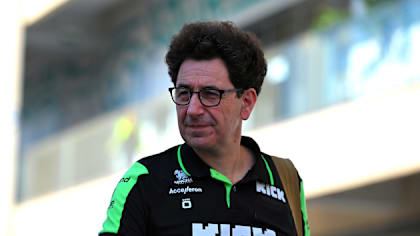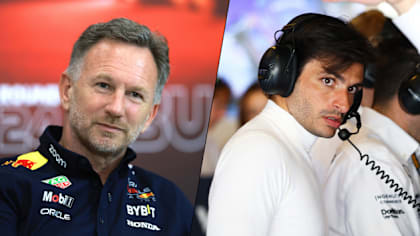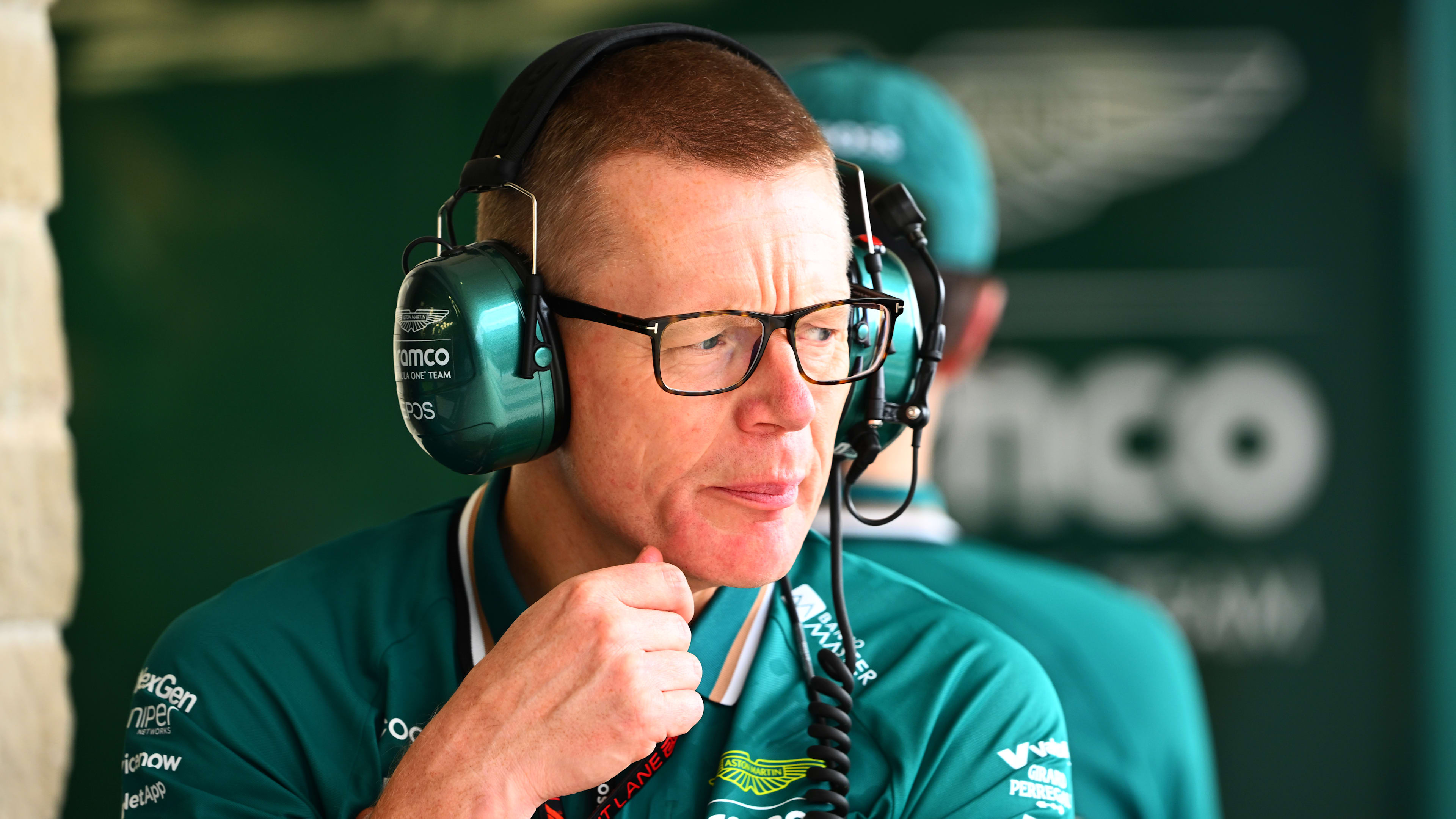In our series exploring the history of Grands Prix through a selection of iconic images, we turn our attention to Germany, and primarily to Hockenheim - the venue for this year’s race.
This look back through history takes in Juan Manuel Fangio’s greatest ever drive, emotional victories for Tambay, Berger and Barrichello, heartbreak for Hill, a huge start line crash, and more…
Fangio saves his best for last, Nurburgring, 1957
For all but one year between 1951 and 1976, the German Grand Prix was held at the mighty Nurburgring circuit in the Eifel Mountains, and rather aptly it was at this most demanding of venues that Juan Manuel Fangio, one of Formula One racing’s greatest ever champions, scored his final (and arguably finest) victory. The Argentinian arrived at the race as a 46-year-old four-time world champion, but there was little to suggest that his talents were on the wane. In qualifying the maestro lapped the newly-resurfaced 22km track some 16s inside his own lap record to take pole and in the race he held a comfortable 28s lead before making a scheduled fuel stop on lap 11. The Lancia-Ferraris of Mike Hawthorn and Peter Collins sped back into the lead as Fangio’s mechanics took their time fitting news tyres and topping up his Maserati 250F’s fuel tank. By the time Fangio rejoined the track he was well over a minute down on the leading duo, but that was soon whittled away with a charge of epic proportions. Over the remaining 11 laps, he broke and re-broke the lap record 10 times, his fastest lap of all some 8s faster than his pole position time. On the penultimate lap Fangio caught and skilfully passed the two scarlet cars ahead of him, and despite his seat coming loose on the final lap he held on to win the race and seal his fifth drivers’ crown. “There was always fear at the Nurburgring,” Fangio said, “but fear is not a stupid thing. Winning is not a question of courage, but of faith in oneself and the car." The great man is pictured here taking the applause of the crowd as he approaches the finish line.
(© LAT Photographic)
Brooks masters Berlin banking, Avus, 1959
The track pictured here may look more like a fairground ‘wall-of-death’ than a Formula One circuit, but in 1959 the daunting banks of Berlin’s Avus played host to the German Grand Prix. The race was notable for being the only round of the world championship to consist of two heats, both of which were won by Ferrari’s Tony Brooks who took overall victory. The Briton is pictured here leading Stirling Moss , Masten Gregory, Jack Brabham (all Cooper T51 Climax), Jo Bonnier (BRM P25) and Dan Gurney (Ferrari Dino 246) around the infamous North Turn. After negotiating this fearsome corner (the site at which French star Jean Behra would sadly be killed in a sportscar crash on the same weekend), the drivers blasted down the first of Avus’ two parallel straights towards the circuit’s only other corner - the Sudkurve hairpin. Unsurprisingly, safety concerns meant that this would be the world championship’s only visit to Avus, with the German Grand Prix returning to the Nurburgring the following year.
(© LAT Photographic)
Rindt beats Ickx in classic, Hockenheim, 1970
A failure to complete safety improvements meant that the Grand Prix Drivers’ Association refused to race at the Nurburgring in 1970, so the German Grand Prix switched to Hockenheim for the first time instead. The high-speed, tree-lined circuit would provide an epic encounter between Ferrari’s Jacky Ickx (car 10, leading here) and world champion elect Jochen Rindt in his Lotus 72C (pictured close behind). The pair were joined in a slipstreaming group with Jo Siffert, Chris Amon and Clay Regazzoni for much of the race until one by one they each dropped out, leaving the Belgian and the German to fight for victory amongst themselves. Eventually, just two laps from the finish, Rindt seized the decisive advantage, holding on to win by just 0.7s. It was the rapid Austrian’s fourth successive win and gave him a 20 point lead in the race for the world title.
(© Sutton Images)
Tambay eases Ferrari pain with poignant first win, Hockenheim, 1982
Having already lost the talismanic Gilles Villeneuve to a tragic accident earlier in the season, there was more heartache in store for Ferrari at the 1982 German Grand Prix as championship leader Didier Pironi sustained career-threatening injuries in a violent crash during Hockenheim practice. The Scuderia’s hopes thus passed to Patrick Tambay, the man who had been brought into the fold after Villeneuve’s passing. In truth, victory seemed beyond the charming Frenchman on race day as the Brabham of Nelson Piquet raced into a seemingly unassailable lead. But memorably the Brazilian was tipped out of the race by Eliseo Salazar’s ATS and the rest, as they say, is history. Tambay brought the lone 126C2 home to record a maiden victory and after an emotional embrace with the Ferrari mechanics, the Frenchman was joined on the podium by countryman Rene Arnoux (left) and third-place finisher Keke Rosberg (right).
(© Sutton Images)
Fuel furore forces Prost to push, Hockenheim, 1986
The 1986 German Grand Prix produced one of the most dramatic finishes in the event’s history with the leading places not decided until the final corners of the last lap. Throughout the race the one-stopping McLarens of Alain Prost and Keke Rosberg had diced with Nelson Piquet’s two-stopping Williams, but by the final lap they’d not only been beaten by the Brazilian, but they were also now critical on fuel. Rosberg’s second-placed car was the first to give up, spluttering to a halt on the back straight. Senna, who had already passed Prost for third, nipped by the Finn’s car to take second, but surely third was the Frenchman’s? Not so - as Prost entered the stadium section at the end of the final lap his engine, devoid of fuel, finally cut out. The ‘Professor’ undid his belts and desperately tried to jerk the car onwards, but it was losing momentum. Out of ideas and just metres from the finish line Prost jumped out of the car and - as pictured - began to push. But as the crowd cheered him on, the McLaren was passed by Nigel Mansell’s Williams and with his podium gone and Rene Arnoux’s Ligier set to take fourth, the defeated Frenchman wheeled his car off track. He would eventually be classified sixth.
(© LAT Photographic)
Tyre blows it for Hill, Hockenheim, 1993
Two weeks before the 1993 German Grand Prix, Damon Hill had seen his hopes of a maiden world championship victory go up in smoke as the Renault V10 in the back of his Williams expired 18 laps from the flag at Silverstone. Sadly the Briton would have an even nearer miss at Hockenheim when, having led virtually all race, he suffered a left-rear tyre deflation midway around the penultimate lap. As he limped back towards the pits, Hill was powerless in preventing team mate Alain Prost from overtaking and the Frenchman duly wrapped up what would turn out to be his 51st and final victory. Hill, meanwhile, got as far as the pit lane entry before spinning his ill-handling car into retirement. But as he climbed out of his stricken car, little did Hill know that just a few weeks later he would finally score his breakthrough win in Hungary.
(© Sutton Images)
Berger celebrates emotionally charged victory, Hockenheim, 1997
To say that Gerhard Berger had endured a rough time leading up to the 1997 German Grand Prix would be an understatement. Not only did the popular Austrian miss three consecutive races because of sinus problems, but during the same period his father was killed in a plane crash. But out of pain and heartbreak came a fairy tale performance and what the Benetton driver would subsequently describe as his ‘best ever victory’. Having taken pole in qualifying, the then 37-year-old overcame an inferior two-stop strategy to see off the feisty challenge from Giancarlo Fisichella’s one-stopping Jordan. Berger is pictured here celebrating a perfect weekend in which he also claimed fastest lap. It proved to be his 10th and final Grand Prix win.
(© LAT Photographic)
Tearful Barrichello takes maiden victory, Hockenheim, 2000
Ferrari’s Rubens Barrichello described the Saturday of the 2000 German Grand Prix - when car problems consigned him to a distant 18th in qualifying - as his “worst day of the year”. What contrast it was then when, on the Sunday, the Brazilian took his maiden Grand Prix victory thanks to a fortuitous safety car and an inspired drive on slicks in damp conditions. Never one to hide his emotions, Barrichello’s eyes filled with tears of joy as he stood atop Hockenheim’s podium, but he was smiling again as McLaren’s Mika Hakkinen (pictured in the background) and David Coulthard (right, obscured) gave him a customary soaking with champagne.
(© Sutton Images)
Burti survives spectacular airborne shunt, Hockenheim, 2001
The 2001 season proved to be a rather unfortunate one for Prost’s Luciano Burti who suffered two major crashes in a matter of weeks. The first, pictured here, occurred off the start line at Hockenheim when Michael Schumacher’s Ferrari (red car, right of picture) bogged down and was struck square on by the unsighted Brazilian. In an instant Burti’s car was pointing skywards from where it twisted spectacularly before landing upside down and virtually on top of Enrique Bernoldi’s Arrows. The stricken Prost, still moving at speed, then righted itself before skipping through the gravel and into the Turn 1 barriers. Despite the violence of the shunt both Burti and Schumacher were able to take the re-start in spare cars, though neither would make it as far as the chequered flag. A little over a month later Burti was involved in an even bigger crash in Belgium and his injuries kept him out for the rest of the season.
(© LAT Photographic)
“Fernando is faster than you”, Hockenheim, 2010
Rarely has a radio message been scrutinized as much as Rob Smedley’s missive to race leader Felipe Massa in the latter stages of the 2010 German race. With title-contending Ferrari team mate Fernando Alonso in close proximity, Massa (leading in this picture) was given the message “Fernando is faster than you. Can you confirm you understood that message?” Moments later the Brazilian duly let his Spanish team mate past, Alonso went on to collect the maximum 25 points, and Ferrari were swiftly embroiled in a team orders scandal that saw them fined $100,000 for bringing the sport into disrepute. The incident proved to be a turning point as the rules regarding team orders were subsequently revised.
(© Sutton Images)
)


)
